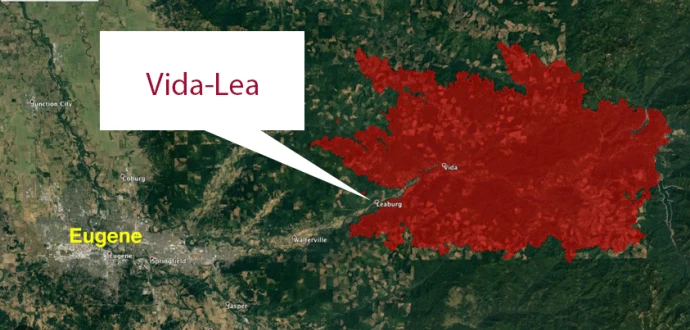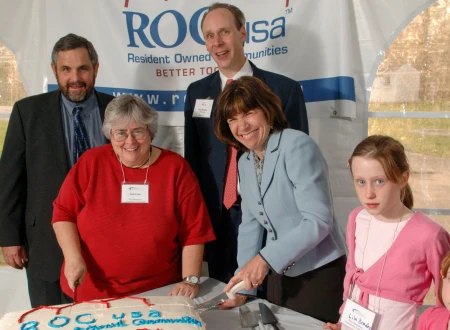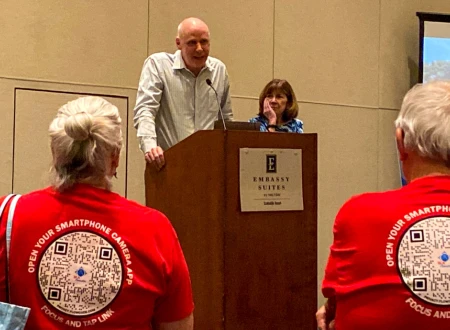
LEABURG, Ore. – More than 1.2 million acres burned and 5,000 homes were destroyed during Oregon’s 2020 Labor Day wildfires.
The homeowners at Vida-Lea Community Cooperative in Leaburg, Ore., got the call to evacuate in the middle of the night.
“The night the fire started, we weren’t given advance warning in stages, we just got the last warning in the middle of the night, ‘Get out now. Evacuate!’” said Penny Scott, Board President at Vida-Lea. She shared this information with ROC USA via email, adding Dan Fountain’s memories from the fires. Fountain was one of the community’s founding Board Members when homeowners purchased their community in February 2012. “The word ‘fire’ wasn’t mentioned so my husband and I looked at each other and asked, ‘Why? Is there a comet coming? What’s going on?’ Then we looked outside, and things were kinda strange.”
When they went outside, they realized it was a fire. They packed up some of their belongings, as did the other 33 homeowners, and left. And they weren’t the only cooperative in Oregon that evacuated during that time. Umpqua Ranch Cooperative in Idleyld Park, Mountain View Cooperative in Estacada and Clackamas River Community Cooperative in Clackamas also evacuated.
“For two weeks, we didn’t know if we’d have a house to come home to,” Scott said. “When we returned, there were burnt leaves and branches everywhere but no damage to the homes.”
They returned to a community that was unscathed by wildfires and Scott credits the preservation of Vida-Lea to the mitigation work done years prior.
In 2012, Vida-Lea took advantage of a state program that offered households $1,500 worth of fire prevention help. The Oregon Department of Forestry sent in a team that removed tree branches and cleared brush and blackberry bushes from the 55-and-older community.
“They advised us to keep the areas they worked cleared, which we did for years,” Scott wrote. Community Members also installed a generator so fire hoses could be used in an emergency and developed a working relationship with the local fire department.
“That would be advice I would give to other parks, ‘Get to know your local fire department.’”
– Penny Scott, Board President at Vida-Lea
“The local fire department worked very hard to save Vida-Lea,” Scott said. “We have a good and long relationship with them, and they had allowed us to use the facility for meetings and gatherings. Helping us was a priority because they were aware that we existed and needed help. That would be advice I would give to other parks, ‘Get to know your local fire department.’”
ROC USA works with close to 70 ROCs in the western United States. These communities tend to be in more vulnerable areas where wildfires may spread. But the reality is that a fire can affect any community at any time. In August 2023, a brush fire spread to Bob’s and Jamestown Homeowners Cooperative in Lakewood, Wash., killing two men and destroying nine homes.
According to Julie Massa, relationship manager at ROC USA and an Oregon resident, said local, state and federal resources are available in most states and are aimed at expanding defensible space for wildfire abatement around or near ROCs.
“Trees, leaves, cones and needles mean different things to different people,” Massa said. “To fire prevention and safety experts, they consider them fuel(s) for a fire that has the power to devastate a community physically and emotionally. Some programs fully cover, cost-share or reimburse the cost of fuels reduction in ROCs or other communities like removal of needles, limbs, twigs, tree limbs, trees and leaves.”
While fire mitigation is important for the outside of all manufactured homes and communities, fires are also a concern during the colder months for many communities as candles, space heaters and other lighting options with cords are in full use.
Please click the tips sheet below for a downloadable, linked version.







